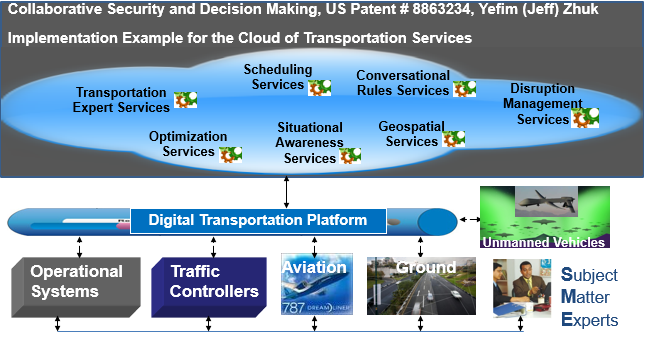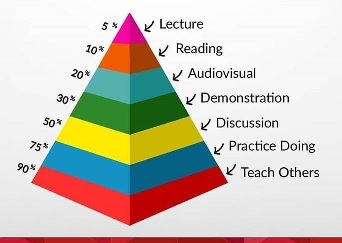The invention transforms a beautiful idea of collaborating decision making into a working system.
The system (patented in the US and 15 European countries) also provides collaborative security for multiple services working together.
In a service-oriented environment, services exposed in a network
might be invoked not only by legitimate applications but also by hackers.
Traditionally, each service is protected individually.
In modern environments, especially with the adaptation of Internet of Things (IoT), many services work simultaneously.
This multiplicity of "things" and factors, described as situational scenarios,
can serve for collaborative security and collaborative decision making.
Security is all about the levels of security.
Taking into account multiple factors in a collaborative fashion will increase security.
Simultaneous activity of many services or "things", working on a common task, requires collaborative decision making.
People not always have easy time, while making collaborative efforts.
How can computer services optimize their behavior,
when many of them simultaneosly perform different and sometimes conflicting tasks,
interfere with external events and weather, trying to adapt to a quickly changing situation?
The invention, Collaborative Security and Decision Making in SOA environment,
answers this question and turns this beautiful idea into a working system.
The illustration above provides an example of collaborative interaction of transportation services.
Ground and Aviation transports, including unmanned aerial vehicles (UAV), are controlled by multiple services:
- Operational Systems
- Traffic Controllers
- Scheduling and Planning Services
- Geospatial Services
- Situational Awareness Services (weather and external objects)
- Disruption Management Services
- Optimization Services (general trajectory optimization)
- Transportation Expert Services (specific transport knowledgebase)
- Conversational Rules Services (multi-dimensional matrix of rules and scenarios, capable to expand in conversation with SME)
- Subject Mater Experts can be engaged for unexpected situations to expand the rules and scenarios with new situations;
more often in the beginning and not so often when the system can recognize more and more situational cases
One of the keys, similar to peoples collaboration,
is the ability of system services to converse, understand, and adapt to the changes.
The difficult part is the mixture of business and technical slang in expressing events and situations.
Generally speaking, business prefers natural language,
while technical language is XML and web services standards.
Necessity of the semantic bridge provided by AI is obvious.
The bridge is coming especially handy when Subject Matter Experts must intervene in an unexpected situational scenario.
Conversing with a machine and modeling on-the-fly requires new skills.
It requires a SME to understand business and system architecture,
in other words to perform a role of a business architect.
Business Architects are becoming key players changing corporate culture and promoting new approaches.
They need a safe playground.
Business Architecture Sandbox for Enterprise, BASE, offers this playground.
BASE facilitates business and IT collaboration and encourages placing the seeds of new technologies in the current business ground.

This relatively new area of integrated software and knowledge engineering opens new horizons to application development.
The industry started its heavy turn to Artificial Intelligence demanding a new set of skills.
Most of the related products and tools are based on Java and Python.
Application developers need to learn more about Semantic Technology and AI Prompts and come closer to the business side of the story,
ideally becoming Business Architects, who understand a bigger picture.




